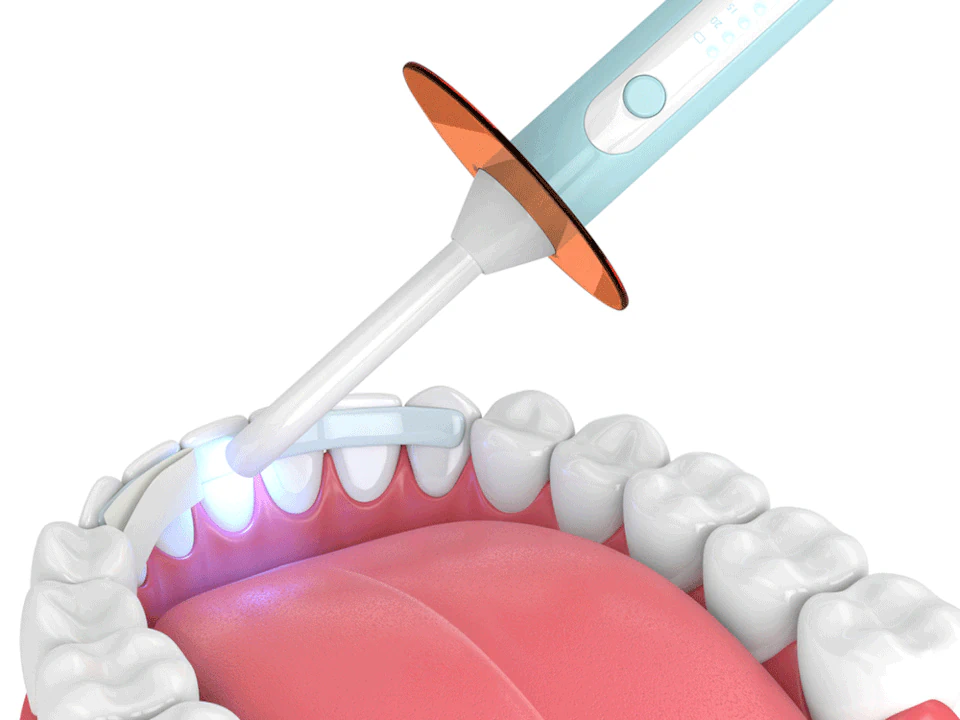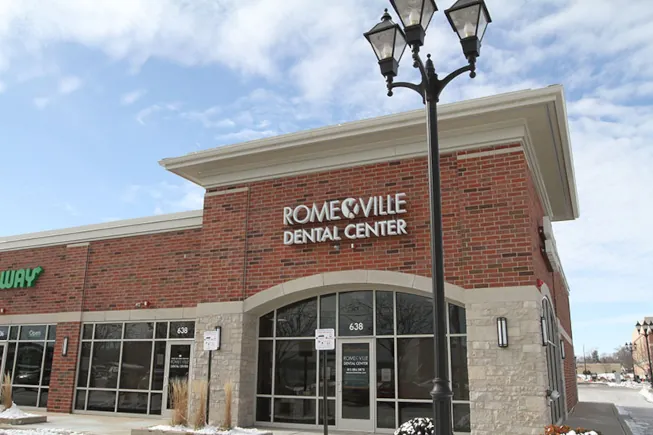Dental Bonding in Romeoville, IL
Dental bonding is an alternative to veneers and can be used to restore teeth that are chipped, cracked, discolored, or misaligned.
Fix chipped teeth today with Dental Bonding at Romeoville Dental Center
Dental bonding involves preparing the tooth for the procedure by gently etching the surface and applying a bonding liquid. After the liquid sets, a plastic resin is applied and shaped to the desired form. Once the resin sets, it is trimmed, smoothed, and polished for a natural appearance.
Bonding is utilized to repair or enhance the look of a tooth. It is commonly used in cosmetic procedures to cover chipped teeth but can also serve as an alternative to fillings, to close up spaces, or to fill in gaps.

-
Dental bonding vs. veneers—which one should I get?
Dental bonding and veneers are used to fix broken teeth or cavities and improve the overall appearance of your smile. Veneers cover the entire front surface of the tooth, while bonding is applied to a smaller area. Both bonding and veneers can enhance your smile and address spacing issues. However, dental bonding is typically used for emergencies. If you have a cracked or fractured tooth, bonding is the quickest way to repair it and only requires one appointment. Bonding is a great option for a quick fix for minor to moderate defects or cavities on your front tooth or teeth. Keep in mind that veneers are an alternative solution, requiring more time and upfront investment but providing a superior, longer-term cosmetic result.
-
What is gum contouring?
Gum contouring is common for individuals unsatisfied with their “gummy” smile. It involves removing some gum tissue and reshaping it to reveal more natural teeth. This procedure is usually a personal choice based on how comfortable you feel about your gums. If your gums are uneven or cover too much or too little of your teeth, you might be a good candidate for gum contouring or reshaping.
-
How long does dental bonding last?
Dental bonding doesn’t last as long as veneers, but the application should last approximately ten years if you properly care for your teeth. This means avoiding hard candy, ice cubes, and similar substances that can break down and crack the composite material. The length of the application is also affected by the bonded area; for example, an imperfect bite or grinding of your teeth can cause the composite to break down faster.
More Questions?
If you have more questions about dental bonding, or if you would like to schedule an appointment, contact our office and we will be happy to discuss further.

